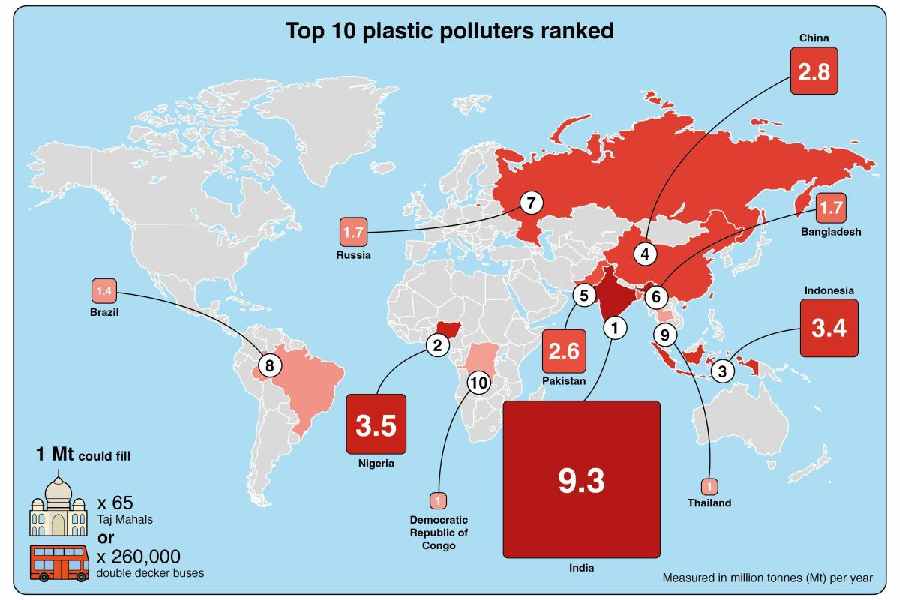India is the world’s largest plastic polluter, releasing enough plastic waste into the environment each year to fill 604 Taj Mahals, according to a study released on Wednesday that has displaced China from the top position.
Researchers at the University of Leeds in the UK have estimated that India emits some 9.3 million tonnes of macroplastic waste into the environment, over 90 per cent of it coming from uncollected municipal waste or waste burned at land disposal sites.
Their study, aimed at producing the first ever global plastic pollution inventory, has calculated that the world released 52 million tonnes of plastic waste into the environment during 2020, with India, Nigeria, Indonesia, China and Pakistan the top five polluters. The researchers have estimated that one million tonnes of macroplastic waste would fill 65 Taj Mahals.
“We’re hoping our findings will provide national governments baseline estimates from which they could work towards reducing plastic pollution through local action plans,” Ed Cook, a study co-author and research fellow at Leeds who specialises in plastic waste management, told The Telegraph.
Cook and his colleagues Josh Cottom and Costas Velis who used artificial intelligence tools to model waste management in over 50,000 municipalities around the world have estimated that two-thirds of the planet’s plastic pollution comes from uncollected rubbish.
Indian regulatory authorities have since 2022 sought to curb plastic pollution through rules that prohibit the production, sale, or use of single-use plastic items, including plastic cutlery, wrapping films, balloon sticks, flags, banners and fine plastic carry bags less than 100 microns in thickness. Thicker carry bags are intended to curb the use of light-weight single-use carry bags.
But plastic bags, Cook said, represent only one relatively small component of India’s plastic pollution challenge. The study has estimated that 53.4 per cent of India’s plastic pollution emissions come from uncollected municipal waste and 38.2 per cent comes from waste burned at land disposal sites.
India’s Central Pollution Control Board’s annual report for 2020-21 reported that uncontrolled land disposal dumpsites outnumber sanitary landfills by 10:1. Despite the claim that there is a nationwide collection coverage of 95 per cent, the Leeds researchers have said, there is evidence that the official statistics do not include rural areas, open burning or uncollected waste.
“India’s official statistics on waste generation omit many rural areas,” Cook said.
The study results have suggested that sub-Saharan Africa could become the world’s largest source of plastic pollution over the next few decades because many of its countries have poor waste management systems and its population is expected to grow rapidly.
“People whose waste is not collected have no option but to dump it or burn it,” said Costas Velis, a professor of civil engineering at Leeds who supervised the study. Setting plastic on fire may seem to make it disappear, but open burning of plastic waste can contribute to human health damage and lead to a much wider dispersal of the pollutants, Velis said.
The study’s co-author Cottom said: “The health risks from plastic pollution impact some of the world’s poorest communities who are powerless to do anything about it.”











